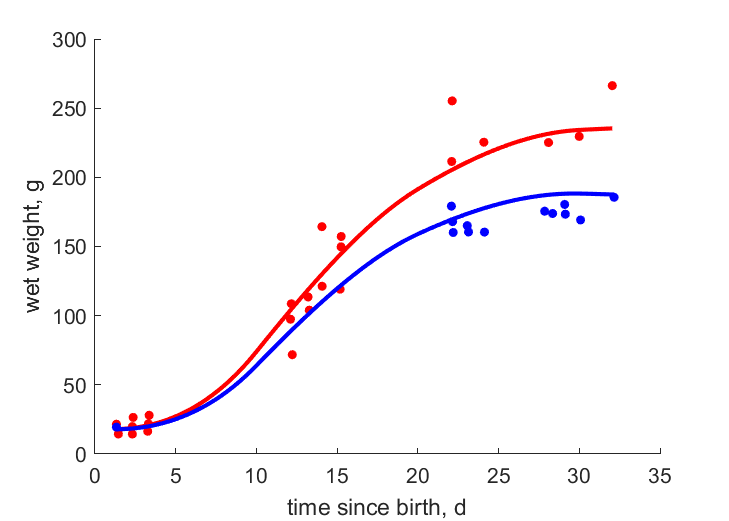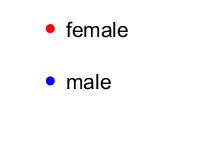Predictions & Data for this entry
| Model: std | climate: Aw, BSh, Cwa, Cwb | migrate: Ms | phylum: |
| COMPLETE = 2.5 | ecozone: TPa, TPi | food: biCi, biCv | class: |
| MRE = 0.042 | habitat: 0iTh, 0iTg, 0iTa | gender: Dg | order: |
| SMSE = 0.005 | embryo: Tnpf | reprod: O | family: |
Zero-variate data
| Data | Observed | Predicted | (RE) | Unit | Description | Reference |
|---|---|---|---|---|---|---|
| ab | 33 | 33.63 | (0.019) | d | age at birth | avibase |
| tx | 37 | 37.15 | (0.004142) | d | time since birth at fledging | avibase |
| tp | 111 | 107.8 | (0.02875) | d | time since birth at puberty | guess |
| tR | 365 | 365 | ( 0) | d | time since birth at 1st brood | guess |
| am | 6205 | 6188 | (0.002794) | d | life span | guess |
| Wwb | 19 | 18.5 | (0.02625) | g | wet weight at birth | Osbo1981 |
| Wwi | 248 | 267.1 | (0.07692) | g | ultimate wet weight for female | avibase |
| Wwim | 157 | 150.5 | (0.04113) | g | ultimate wet weight for male | avibase |
| Ri | 0.01096 | 0.01079 | (0.01515) | #/d | maximum reprod rate | AnAge |
Uni- and bivariate data
| Data | Figure | Independent variable | Dependent variable | (RE) | Reference |
|---|---|---|---|---|---|
| tW_f |   | time since birth | wet weight | (0.104) | Osbo1981 |
| tW_m |   | time since birth | wet weight | (0.06339) | Osbo1981 |
Pseudo-data at Tref = 20°C
| Data | Generalised animal | Falco chicquera | Unit | Description |
|---|---|---|---|---|
| v | 0.02 | 0.02477 | cm/d | energy conductance |
| p_M | 18 | 463.1 | J/d.cm^3 | vol-spec som maint |
| k_J | 0.002 | 0.01908 | 1/d | maturity maint rate coefficient |
| k | 0.3 | 0.3018 | - | maintenance ratio |
| kap | 0.8 | 0.9237 | - | allocation fraction to soma |
| kap_G | 0.8 | 0.7995 | - | growth efficiency |
| kap_R | 0.95 | 0.95 | - | reproduction efficiency |
Discussion
- Males are assumed to differ from females by {p_Am} only
- Food vailability taken variable in tW data
- mod_1: v is reduced
- mod_2: males have equal state variables at b, compared to females
- mod_3: Pseudo-data point k is used, rather than k_J; Data set tp and parameter t_R are added, the latter replacing clutch interval t_N. Postnatal T is based on PrinPres1991, see get_T_Aves. See further the revision page, theme puberty
Bibliography